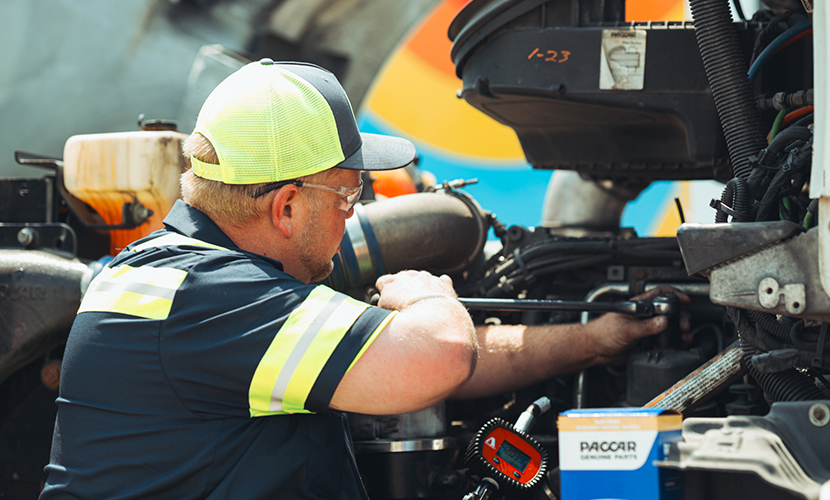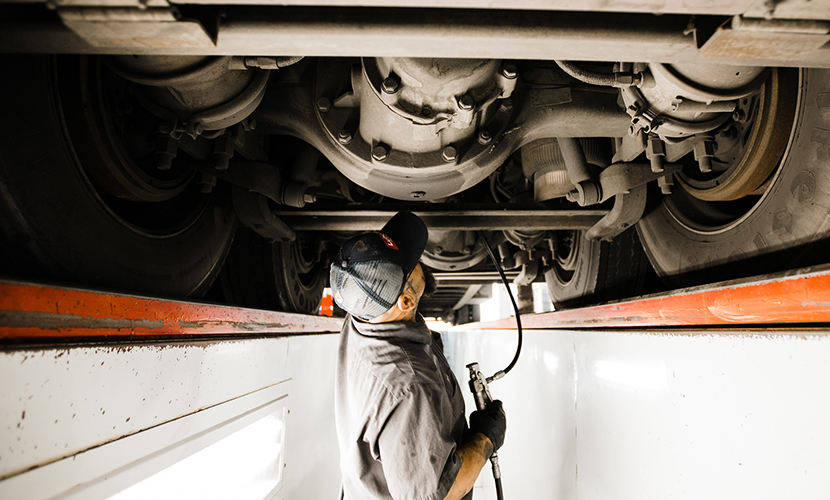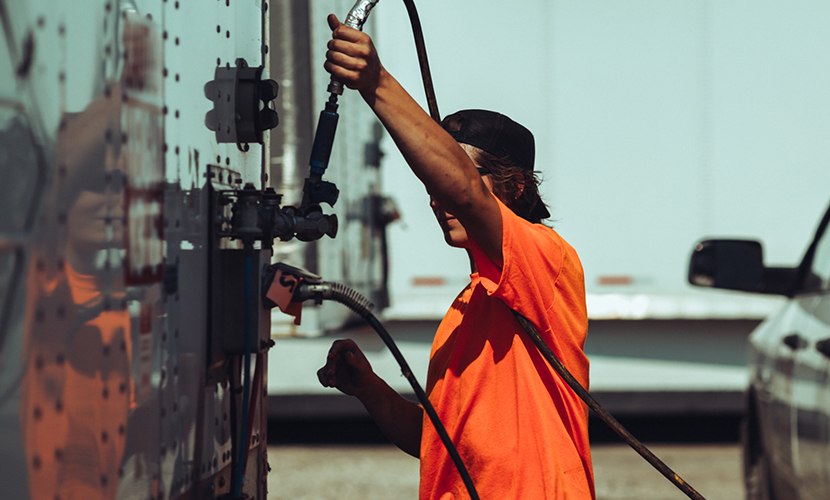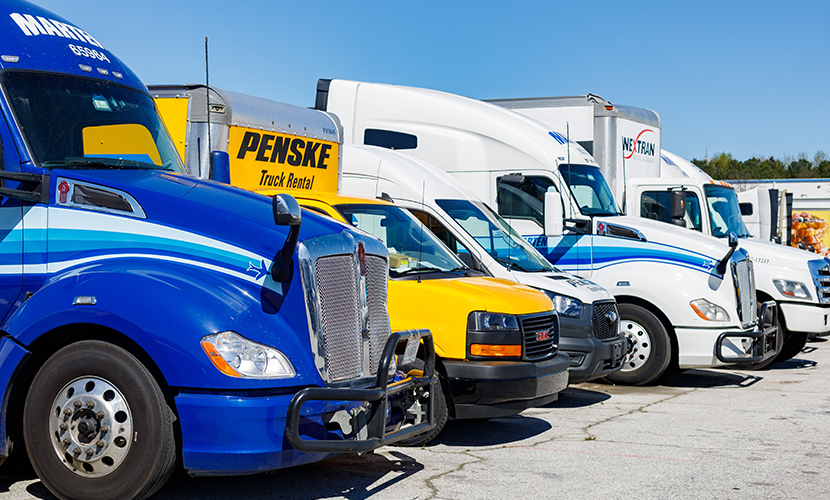5 Effective Strategies for Fleets to Improve Fuel Efficiency

Fuel costs are one of the largest ongoing expenses for any fleet, whether you have a few trucks tooling around a local area or a massive logistics network spanning the continent. Fuel is an ongoing expense, and it’s fickle, with diesel prices rising and falling according to factors far outside of our control. It stands to reason that you’d want to reduce these costs as much as possible, but how can you do so as a fleet manager? Here are five potential strategies you can try.
1: Optimize Routing
Depending on the kind of fleet you manage, you may be able to put some serious effort into optimizing the routes your trucks take. This is difficult in cases where you’re working on an ad hoc basis, sending trucks to destinations on call or as needed. On the other hand, when you have possible planned routes in advance, you can plan routes that optimize fuel usage.
And no, shorter, more direct routes aren’t always better. Anyone who has gotten stuck on a backed-up highway waiting for a traffic jam to clear when a longer but faster surface road route would have long since sufficed can attest to that.
One of the biggest examples of fuel-efficient routing is the much-cited UPS policy of (almost) never turning left.
In the US, since we drive on the right side of the road, left turns are turns across traffic. For residential delivery routes, companies like UPS might find their drivers making a lot of left turns from arterial roads into residential areas or from residential areas onto arterial roads. In both cases, there’s a lot of idling and waiting for an opportunity to turn, which is all time spent burning diesel.
Famously, UPS chooses routes for their drivers with an eye toward fuel efficiency, not the shortest distance. A destination to the left might, instead, involve three right turns. But since all of those turns involve zero waiting, it’s a much faster route, which means less time with the engine running.
“UPS has designed their vehicle routing software to eliminate as many left-hand turns as possible (in countries with right-hand traffic). Typically, only 10 percent of the turns are left turns. As a result, the company claims it uses 10m gallons less fuel, emits 20,000 tons less carbon dioxide, and delivers 350,000 more packages every year. The efficiency of planning routes with its navigation software this way has even helped the firm cut the number of trucks it uses by 1,100, bringing down the company’s total distance traveled by 28.5 million miles – despite the longer routes.” – GE News.
Now, most fleets aren’t working with as complex a set of routes, ever-changing from day to day, with as many different locations and vehicles as UPS. Your fleet’s savings might be orders of magnitude smaller, but the fact remains that efficient routing with a focus on fuel usage will be an optimization.
Left turns aren’t the only source of excess fuel consumption, either. Taking routes with hills rather than flatter routes, taking routes that have extended stops or stop-and-go traffic, and other small optimizations can have significant impacts across a whole fleet.
2: Train Drivers on Efficient Driving
The manner in which a driver operates a vehicle can have a surprisingly large impact on the fuel efficiency of that vehicle. Studies have shown that efficient driving can actually reduce the fuel consumed by as much as 35%.
“According to ATA’s Technology and Maintenance Council (TMC), the most skilled drivers can produce as much as 35% better mpg than less-skilled truck operators. Driver education, accordingly, is one of the most important tools in the large truck fuel economy arsenal. Even the most experienced truck drivers can improve their skills and enhance driving performance through training programs.” – Fleet Owner.
So, what kinds of habits and training can improve fuel efficiency?
Here are a handful of examples:
- Eliminate aggressive driving habits, like sudden speed increases or braking. Instead, slower, more gradual acceleration and deceleration (outside of emergencies, of course) will result in the vehicle being better able to leverage its power without burning excess fuel to do it.
- Using driver’s assistance like cruise control to maintain steady, consistent speeds on long highway journeys.
- Keeping speeds lower. It costs 27% more fuel on average to keep a truck moving at 75 mph than at 65 mph; while a lower speed might be slower in time spent, the fuel efficiency is worthwhile.
These and other techniques may not have any significant impact on a per-driver, per-trip, per-habit basis. However, taken as a whole across an entire fleet, the savings can be significant.
“In combination with training programs, fleet managers can encourage drivers to adopt efficient driving by offering incentives, such as recognition and special privileges. In combination with other fuel management strategies, incentivizing efficient driving behaviors and offering driver training programs can reduce fuel spending.” – Department of Energy.
Offering incentives to drivers to promote proactive, efficient driving can be very beneficial as well.
3: Be Proactive with Vehicle Maintenance
Many aspects of a vehicle can be a drag, both on the mental and emotional state of the drivers and on the physical performance of the vehicle.
- Lower tire pressure results in more friction with the road, increasing the fuel needed to build and maintain speed. It also increases wear on tires and risks time-consuming blowouts and other failures.
- Poor air filters clog up and reduce throughput, resulting in less ventilated engines, poor fuel economy, and hotter running temperatures. Even running the HVAC puts added stress on the system and burns more fuel when the air filters are clogged.
- Old oil gums up the works of an engine and reduces fuel efficiency.
- Other forms of maintenance can affect the performance of a truck directly or the attitude and ability of a driver to drive efficiently.
We’ve written extensively about proactive fleet maintenance. Small things like routine oil changes and inspections, as well as larger aspects of a truck’s engine and drivetrain, can all make a significant difference in fuel efficiency.
A critical part of proactive maintenance is also knowing when enough is enough. Sometimes, a particular vehicle reaches a point where the investment required to keep it moving is more than it’s worth. While this is often calculated with the cost of repairs versus the cost of replacement in mind, the actual threshold should be higher: the cost of repairs plus the cost of continued inefficiency compared to the cost of replacement.
Luckily, if you need ongoing maintenance for your fleet, we’re here to help. Our network of partners provides nationwide coverage for service and repair, no matter where you are. Whether you need emergency repairs, roadside assistance, or just routine maintenance at your destination, we have a partner there waiting for you.
Keeping an aging, ailing truck on the road, even if the actual cost of repairs is minimal (for now), might not actually be worthwhile if the issues it has are causing undue fuel consumption, increasing those costs as well.
Additionally, often newer models of trucks are designed with better standards, better parts, and better efficiency in mind. They aren’t always perfect – we all have counter-examples of times when a newer model drops the ball – but many modern improvements make it well worth the investment.
And that’s all before even thinking about things like hybrid vehicles with built-in solar, battery banks, electric drive systems, and other alternative fuel sources.
4: Track and Analyze Data
One of the biggest challenges of monitoring fuel consumption and making improvements is knowing when and how to make those changes, which changes you should make, and what effect they have.
Luckily, today, you don’t need to force drivers to fill out miles of paperwork for every trip they take, and every maintenance stop they make. Computerized systems can handle all of that for you. You can track fuel economy and cost per mile, track when fuel stops are made (and flag suspicious fuel transactions), monitor performance and mileage via GPS, and correlate it all with a variety of useful data points relating to maintenance logs and more.
This lets you do two things in general.
First, you can reactively respond to anything noteworthy in the data you gather. If a certain route proves to be less efficient than expected, you can reroute it. If a given truck is having problems, you can assign a different truck to the task. If a driver is consistently underperforming, you can flag them for training. If a suspicious fuel purchase is made that doesn’t track, you can investigate for fraud.
Second, you can proactively analyze, predict, and optimize your fleet and systems. Assign newer vehicles with more efficient drivers on more complex or longer routes for better savings. Identify potential choke points and hazards to avoid. You can even adjust the size and organization of your fleet to better suit your needs.
“Rightsizing can mean two different things depending on the fleet. It can entail reducing the number of vehicles, transitioning to a smaller fleet, or incorporating more fuel-efficient vehicles. By evaluating their fleet, managers can conserve fuel, reduce emissions, save money on fuel and maintenance, and optimize vehicle use. To rightsize their fleet, managers must understand their fleet’s daily vehicle use and needs, which can be analyzed on their telematics solution.” – Assetworks.
There are a variety of different software platforms and management systems you can use to track, analyze, and optimize all of the above. Apps like Fleetio, FuelCHEX, Autosist, and more are all available. We don’t have a specific recommendation – a lot depends on your fleet and the specifics of your circumstances – so shop around for one with the features and integrations you like.
5: Invest in Better Vehicles
There are a lot of different ways that more modern vehicles can improve fuel efficiency. The simplest is just that more modern designs tend to be more fuel-efficient by default, through design and through optimization to use fuel in better ways. However, there are other potential benefits as well, including:
- Lighter parts. Older vehicles tend to use more heavy steel parts, whereas newer vehicles might integrate lighter aluminum, alloys, or even carbon fiber for some portions of the vehicle. Less weight means less drag and inertia to overcome, meaning less fuel used to do it.
- Retrofitting of newer parts. Sometimes, it doesn’t quite make sense to replace a truck, but you can replace parts in that truck’s engine or chassis to improve efficiency or weight distribution for the truck.
- Investing in hybrid vehicles. Hybrids generally are primarily electric vehicles with a diesel backup for when the batteries get low. Generally, electric motors are going to cost less per mile than diesel engines. There are also hybrids with biofuels, alternative fuels, and other kinds of power, though these tend to be less common and harder to use without existing infrastructure.
While there are still a lot of barriers between the way fleets operate today and the infrastructure, policies, and availability necessary for a fully hybrid or electric fleet, changes are being made to push in that direction. It’s easier than ever to find electric charging stations, and the cost of vehicles, parts, and maintenance are dropping, so the investment is looking better than ever each year.
This isn’t an immediate benefit, of course. Buying new vehicles is a significant expense, and even the savings from greater fuel efficiency will take a while to pay it off. However, keeping an eye on the future whenever you need to invest in an overhaul or a replacement is going to benefit you over time.
Whatever combination of techniques you choose to use, we can tell you one thing: having a nationwide partner capable of helping you with any problems your fleet encounters, large or small, will go a long way. That’s what we’re here for; all of your fleet maintenance, upkeep, and repairs through one agency, with partnerships and facilities all across the country. Old trucks that need repairs and upkeep? New models you want to keep in pristine condition as long as possible? Small, regional fleets or large national networks? Whatever it is, we can handle it, so give us a call to talk about what we can do for you.





